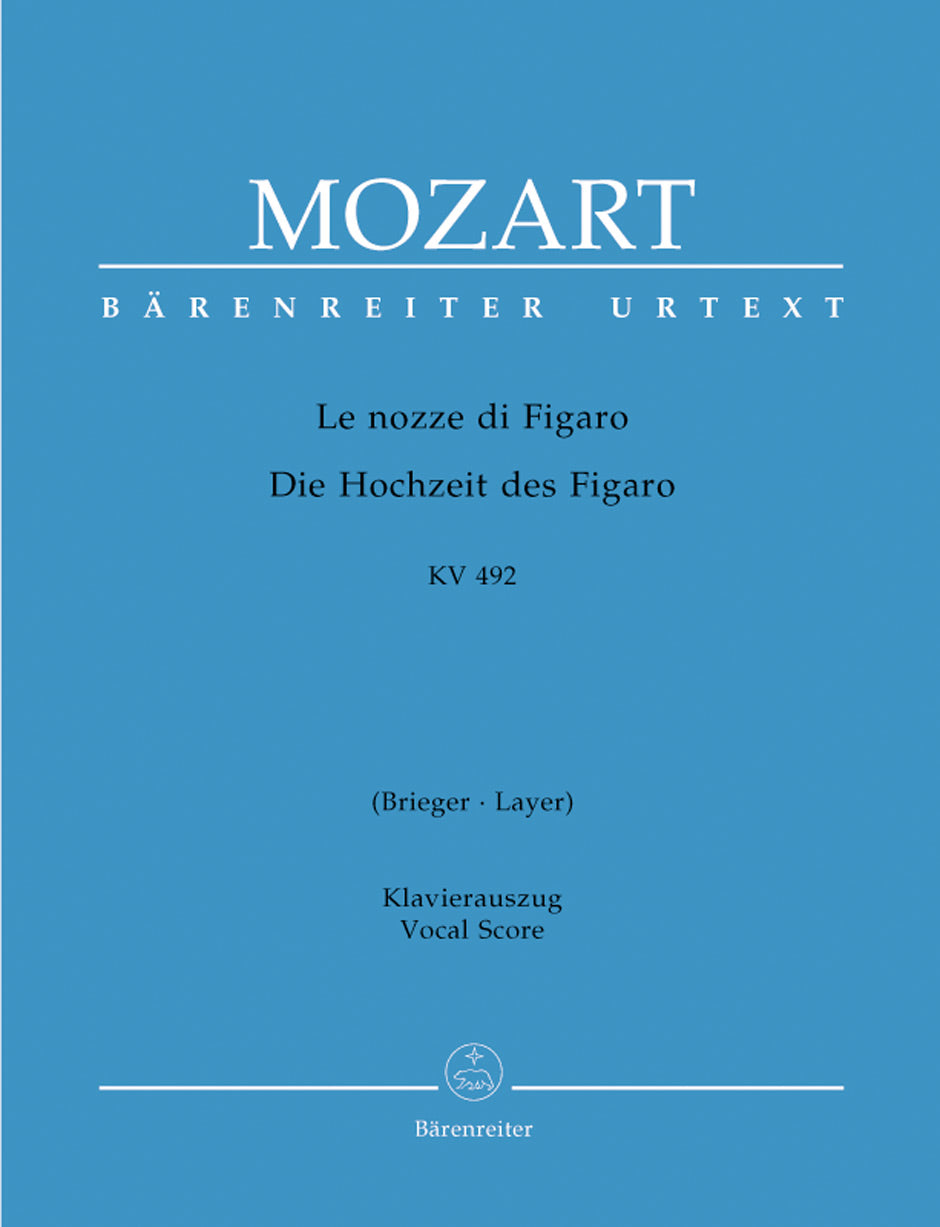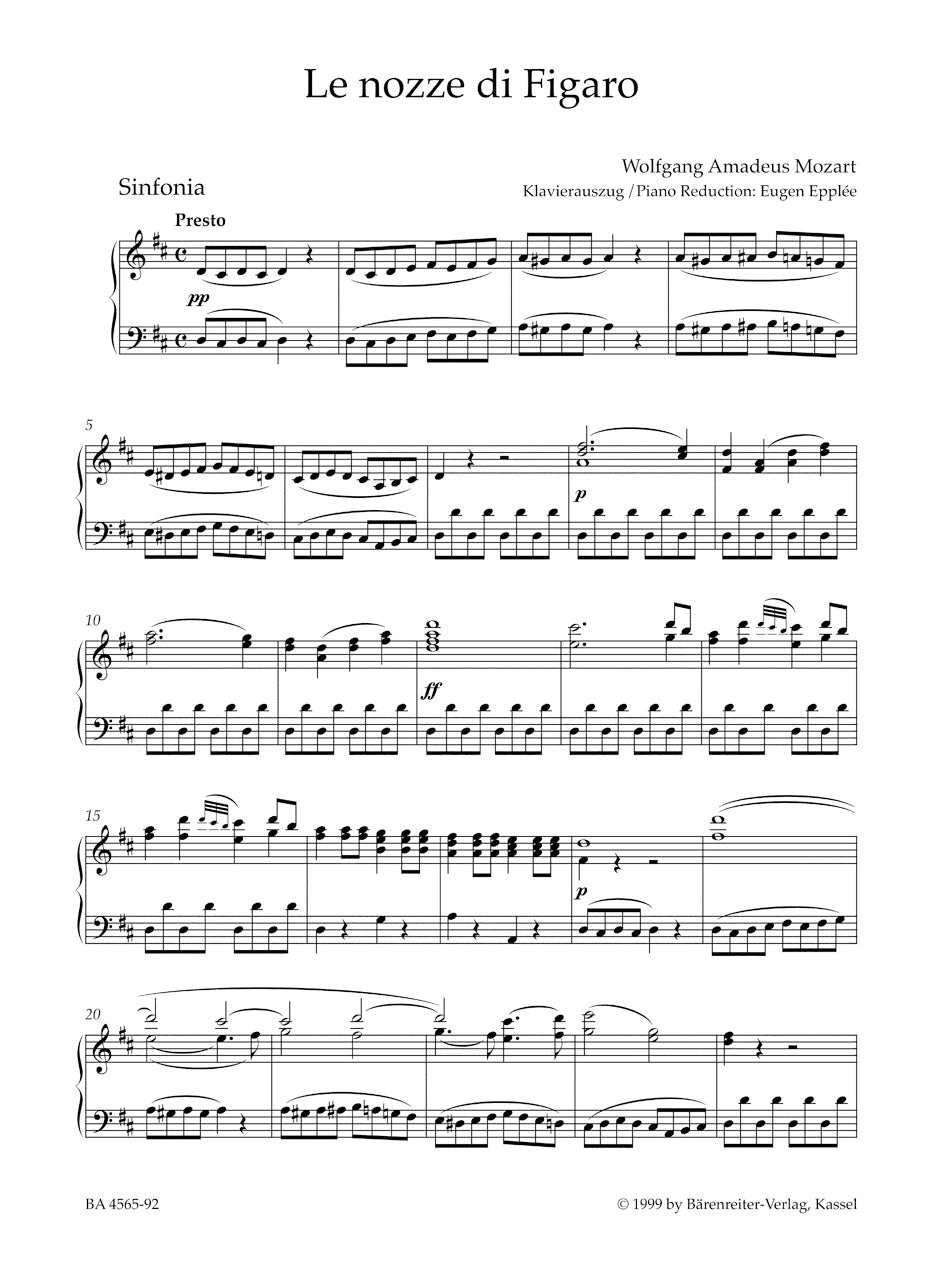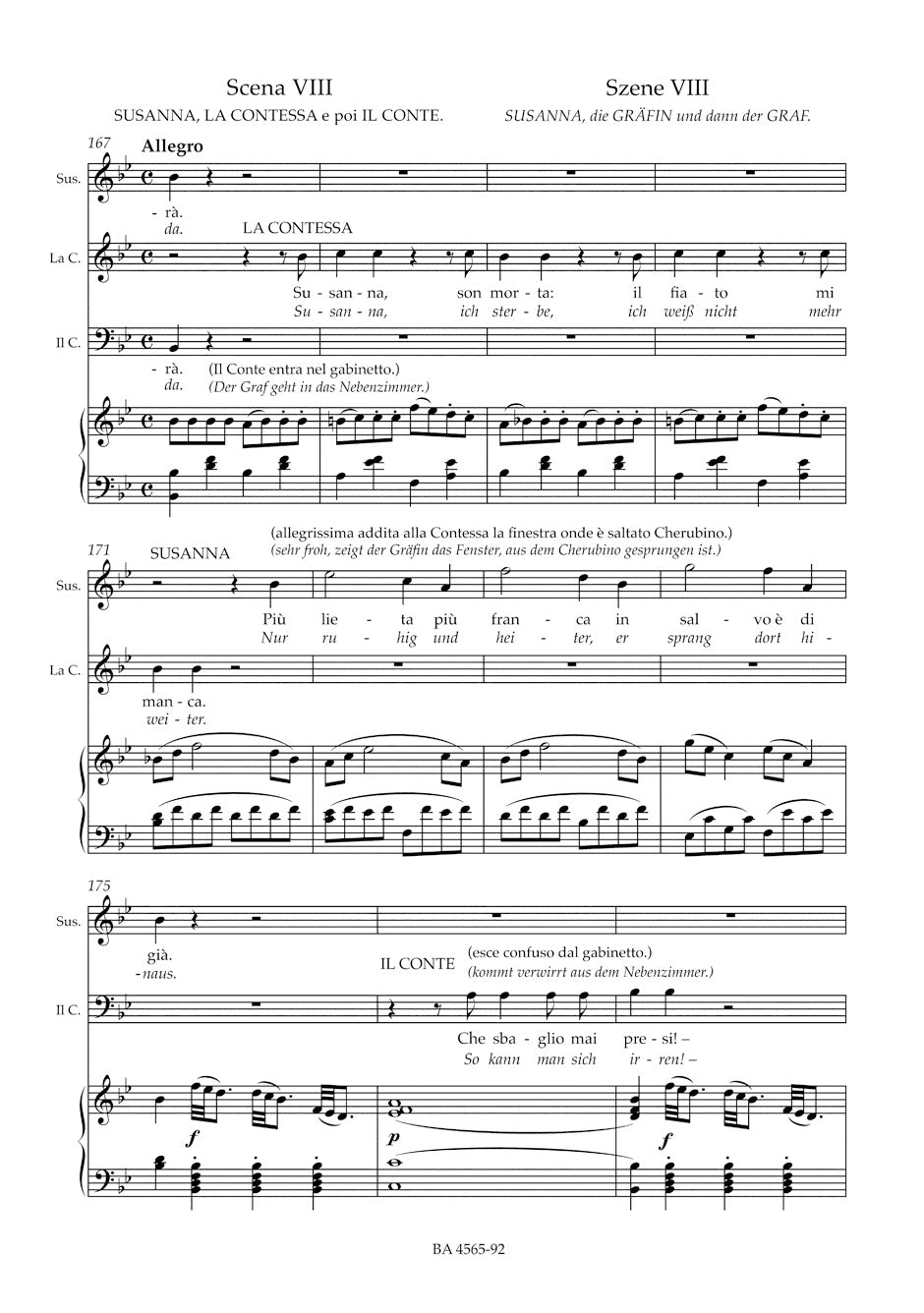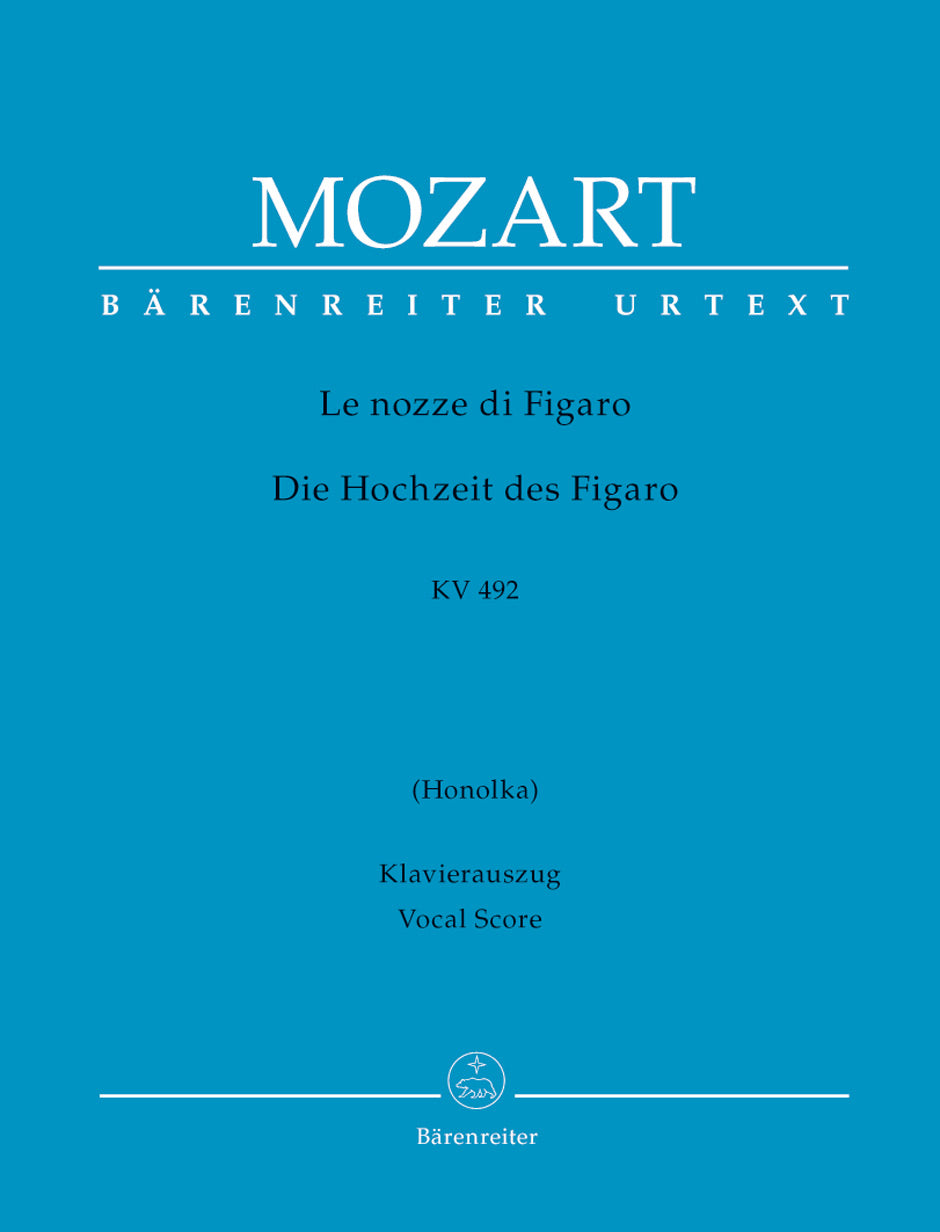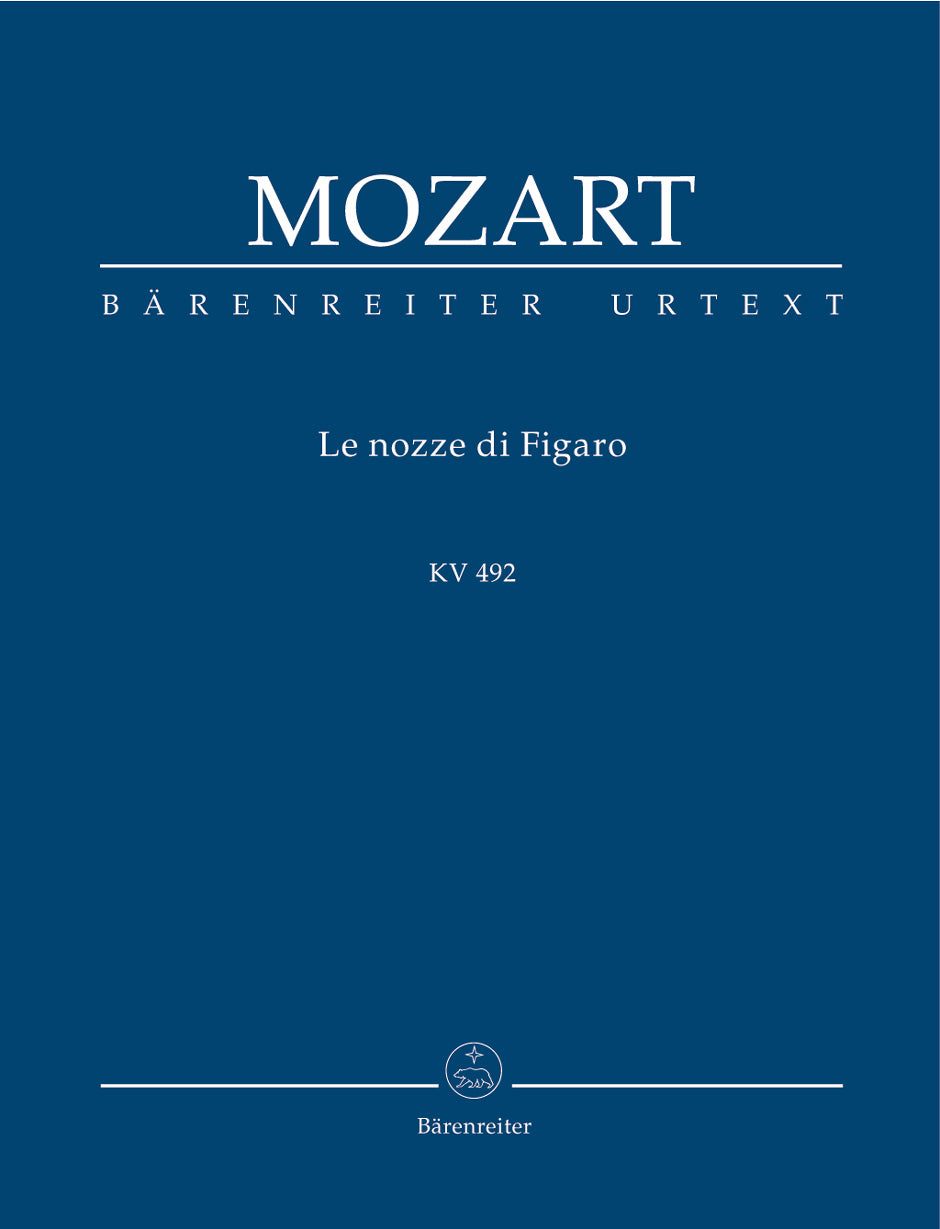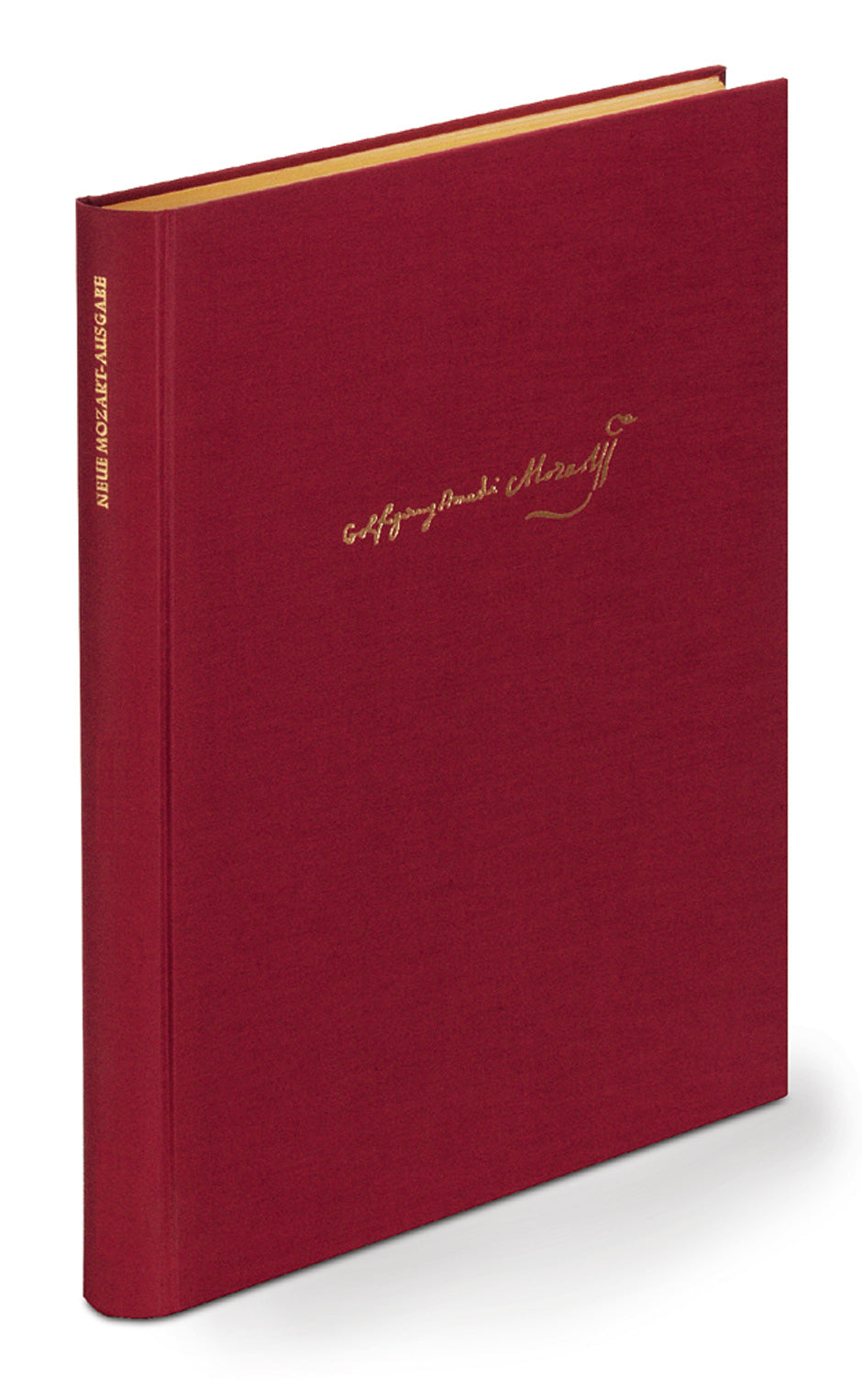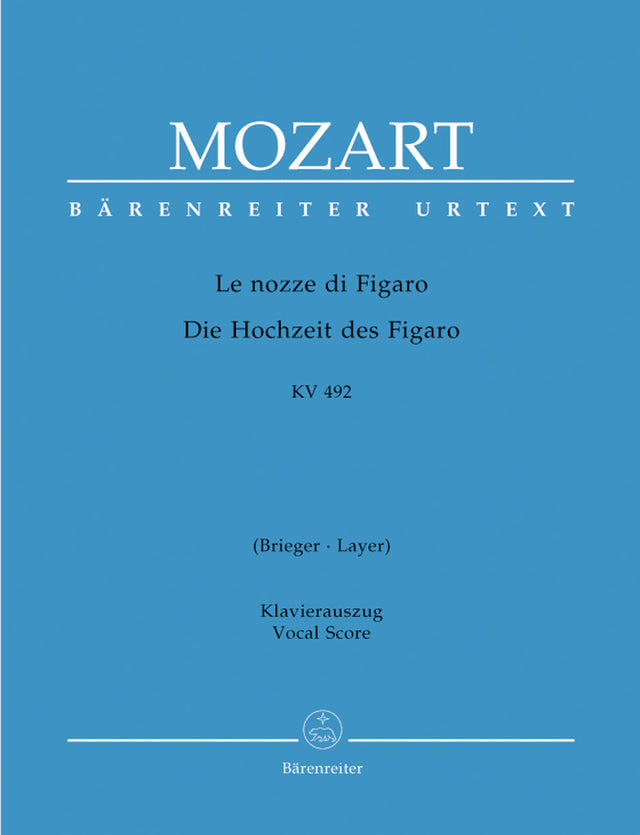Mozart: Le nozze di Figaro, K. 492
The Marriage of Figaro
In stock and typically ships within 1 business day.
- Composer: Wolfgang Amadeus Mozart (1756-1791)
- Translators: Nicolas Brieger, Friedemann Layer
- Instrumentation (this edition): Piano Reduction, Voice
- Originally for: Opera
- Work: Le nozze di Figaro (The Marriage of Figaro), K. 492
- Work Languages: German, Italian
- ISMN:
- Size: 7.5 x 10.5 inches
- Pages: 557
- Urtext / Critical Edition
Description
Premièred at the Vienna Hoftheater on 1 May 1786, Wolfang Amadeus Mozart's and Lorenzo Da Ponte's Le nozze di Figaro may be safely regarded as one of the greatest operatic successes of all times. Yet its success was not entirely due to Mozart's music: on the contrary, because of the extraordinary demands it placed on the orchestra (especially the woodwinds), the music even posed an obstacle to the work's spread outside the German-speaking countries. At least equally responsible for the opera's success was the librettist Lorenzo Da Ponte, who managed to transform a topical and socio-critical stage play into an opera libretto as effective as it is amusing. This vocal score is based on Ludwig Finscher's 1973 edition of ‘Le nozze di Figaro' published in the ‘New Mozart Edition' and the critical commentary by Ulrich Leisinger published in 2007. Many of the sources for Mozart's first opera from the Lorenzo Da Ponte trilogy only became available to scholars again after the ‘New Mozart Edition volume was published. These include the autograph scores of acts 3 and 4, now held at the Biblioteka Jagiello ka in Kraków, significant portions of the original sets of parts and acts 2 to 4 of the conductor's copy from the first performance of 1786. These original sources, now available again, offer compelling solutions to several previously unresolved questions.
Publishers use a lot of words to describe what they sell, and we know it can be confusing. We've tried to be as clear as possible to make sure you get exactly what you are looking for. Below are descriptions of the terms that we use to describe the various formats that music often comes in.
Choral Score
A score for vocalists that only contains the vocal lines. The instrumental parts are not there for reference. Generally, cheaper than a vocal score and requires multiple copies for purchase.
Facsimile
Reproductions of the original hand-written scores from the composer.
Full Score
For ensemble music, this indicates that the edition contains all parts on a single system (there are not separate parts for each player). In larger ensembles, this is for the conductor.
Hardcover
Hardbound. Generally either linen-covered or half-leather.
Orchestral Parts
Similar to a wind set, this is a collection of parts. In the case of strings, the numbers listed are the number of copies included, though generally these are available individually (often with minimum quantities required).
Paperback
When publishers offer multiple bindings (e.g. hardcover) or study scores, this is the "standard" version. If you're planning to play the music, this is probably what you want.
Performance / Playing Score
A score of the music containing all parts on one system, intended for players to share. There are not separate parts for each player.
Set of Parts
For ensemble music, this indicates that there are separate individual parts for each player.
Solo Part with Piano Reduction
For solo pieces with orchestra, this is a version that contains a piano reduction of the orchestra parts. For piano pieces, two copies are typically needed for performance.
Study Score
A small (think choral size) copy of the complete score meant for studying, and not playing. They make great add-ons when learning concertos and small chamber works.
Vocal Score
A score prepared for vocalists that includes the piano/organ part or a reduction of the instrumental parts.
Wind Set
For orchestral music, this is a collection of wind and percussion parts. The specific quantities of each instrument are notated.
With Audio
In addition to the printed music, the edition contains recordings of the pieces. This may be an included CD, or access to files on the internet.
With / Without Fingering (Markings)
Some publishers prepare two copies - a pure Urtext edition that includes no fingering (or bowing) suggestions and a lightly edited version that includes a minimal number of editorial markings.

